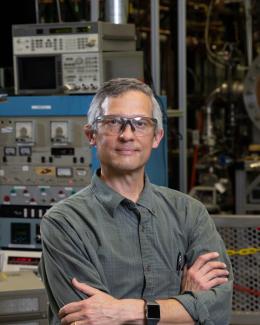Abstract
Ion cyclotron heating (ICH) at a frequency in the 6- to 9-MHz range with electron heating in the 28- to 105-GHz range will be used in the Material Plasma Exposure eXperiment (MPEX) to greatly increase the energy of the plasma stream produced by the helicon plasma source. ICH was chosen over substrate biasing to produce energetic ions because it can more accurately reproduce plasma-material interactions in a fusion device. For instance, when the target is tilted with respect to the background magnetic field during ICH, a magnetic presheath is created so that redeposition phenomena as in a tokamak divertor can be better approximated. ICH experiments were conducted on the Proto-MPEX device, which was developed to provide a physics basis upon which MPEX is designed. In this paper we describe some of these experiments in which the previous fixed graphite target was replaced by a movable stainless steel target. With the new target, the strong, monotonic decrease in ion temperature observed previously as a function of axial distance between the ion cyclotron resonance region and the target was not observed. Instead, only a small drop was seen within ~1 cm of the target. The ion temperatures were determined spectroscopically, utilizing Doppler broadening measurements of an Ar II line, in a plasma that is 90% deuterium and 10% argon. Measurements were obtained using optical fibers at a fixed location, with the target moving perpendicularly relative to the viewing chords. Comparisons with previous results will be discussed, including observed plasma parameters Ti, Te, and ne, and heat flux at the target.





